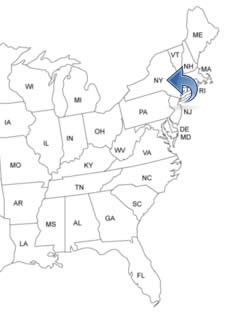NEW YORK PEOPLE SEARCH!
- ✔ Contact Info
- ✔ Phone Numbers
- ✔ Criminal Records
- ✔ Income Info
- ✔ Neighbors
- ✔ People's Age
- ✔ Property Ownership
- ✔ And Much More
Buffalo, New York
Buffalo is located in the western part and is the second largest city in the U.S. State of New York. The Queen City. Buffalo is a city rich with culture and history. The city is a waterfront city and about 20 minutes, by car, from downtown you will find beautiful and natural Niagara Falls State Park. Buffalo is ranked as the third cleanest large city in the United States. Buffalo, although most famous for its winters, has the sunniest and driest summers of any major city in the Northeast.
To See And To Do In Buffalo
- The Niagara Falls State Park
- Buffalo Harbor Cruises
- Buffalo Niagara Heritage Village
- Ira G. Ross Niagara Aerospace Museum
- Buffalo and Erie County Botanical Gardens
- Tifft Nature Preserve
- Buffalo Museum of Science
- Buffalo and Erie County Historical Society Museum
- Buffalo And Erie County Naval And Military Park
- Iron Island Museum
- Queen City Ferry
- Seneca Buffalo Creek Casino
- Olmsted Parks
- Albright-Knox Art Gallery
- Buffalo Transportation Pierce-Arrow Museum
- Theodore Roosevelt Inaugural National Historic Site
- Burchfield Penney Art Center
- Forgotten Buffalo Tours
- The Allentown Historic District
- The Elmwood Village Shopping
- The Buffalo Zoo
History Of Buffalo - Timeline
In 1664, the Buffalo territory was given to the Duke of York by King Charles II. In 1678, the French explorer Robert Cavelier Sieur de la Salle explores the area that is now Buffalo, for France. In 1721, a trading post opened and mostly French trappers lived in the area. In 1726, Fort Niagara was built. In 1758, the Frenchman Chabert Joncaire settled in today's Buffalo and built several buildings and a trading post.
In 1759, Fort Niagara fell to the British and Chabert Joncaire left. In 1763, the British had control over the entire region and in 1780, the British built several villages. In 1789, Buffalo was permanently settled. In 1796, the first free African-American, Joseph Hodge, settled in Buffalo.
In 1804, the village had twenty houses and the city planner and land office agent Joseph Ellicott, designed a radial street and grid system and established mill sites and communities. In 1807, the first schoolhouse was completed.
In 1808, the Village is officially named Buffalo. In 1811, the first newspaper, the Buffalo Gazette, was published. In 1813, British troops and their Native American allies captured Buffalo and burned it to the ground.
By 1816, Buffalo was rebuilt again and had a new courthouse. In 1819, the Buffalo Harbor Company was founded and began the project to deepen the harbor. In 1822, Buffalo completes the break wall in the harbor and steamboats began their traffic in the waters of the Great Lakes.
In 1832, Buffalo was incorporated as a city. In 1834, the city's first railroad was completed and Buffalo's first bank, the Commercial Bank, opened. In 1837, the Buffalo Post Office building was completed. In 1839, the first public school opened. In 1844, a wall of water hit the commercial and residential districts along the waterfront and at least 78 people drowned.
In 1846, a telegraph line and a telegraph office were built. In 1848, the first permanent hospital opened. In 1875, the Buffalo Zoo was established. In 1881, Buffalo was the first city in America to have electric street lights.
In 1889, electric street cars were in use. In 1896, electricity was transmitted from Niagara Falls to Buffalo. In 1901, the Pan-American Exposition, a world fair was held in Buffalo.
In 1912, the historic office building Electric Tower was built. In 1922, the first radio station started. In 1923, the first city bus service began. In 1931, the Buffalo City Hall was completed. In 1940, the Buffalo Philharmonic Orchestra home, the Kleinhans Music Hall, opened.

